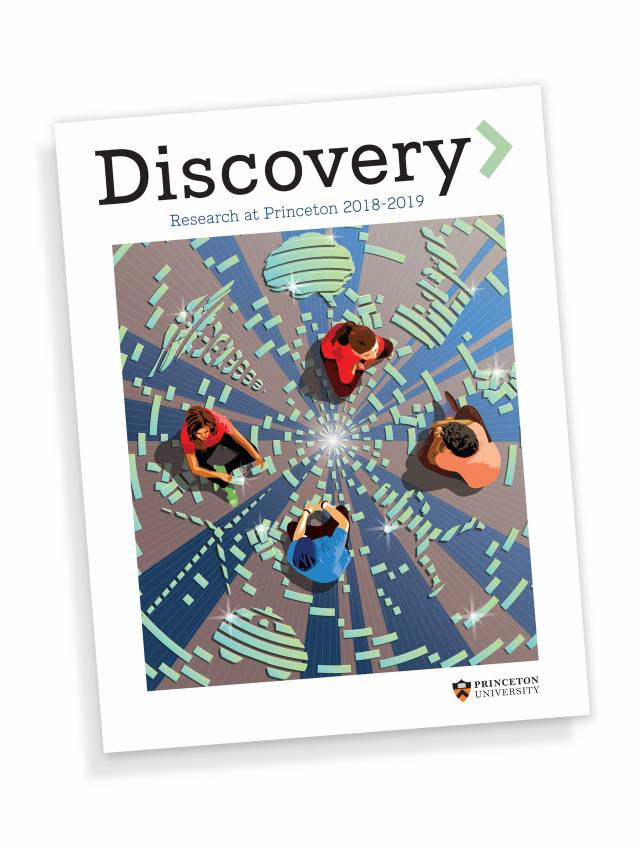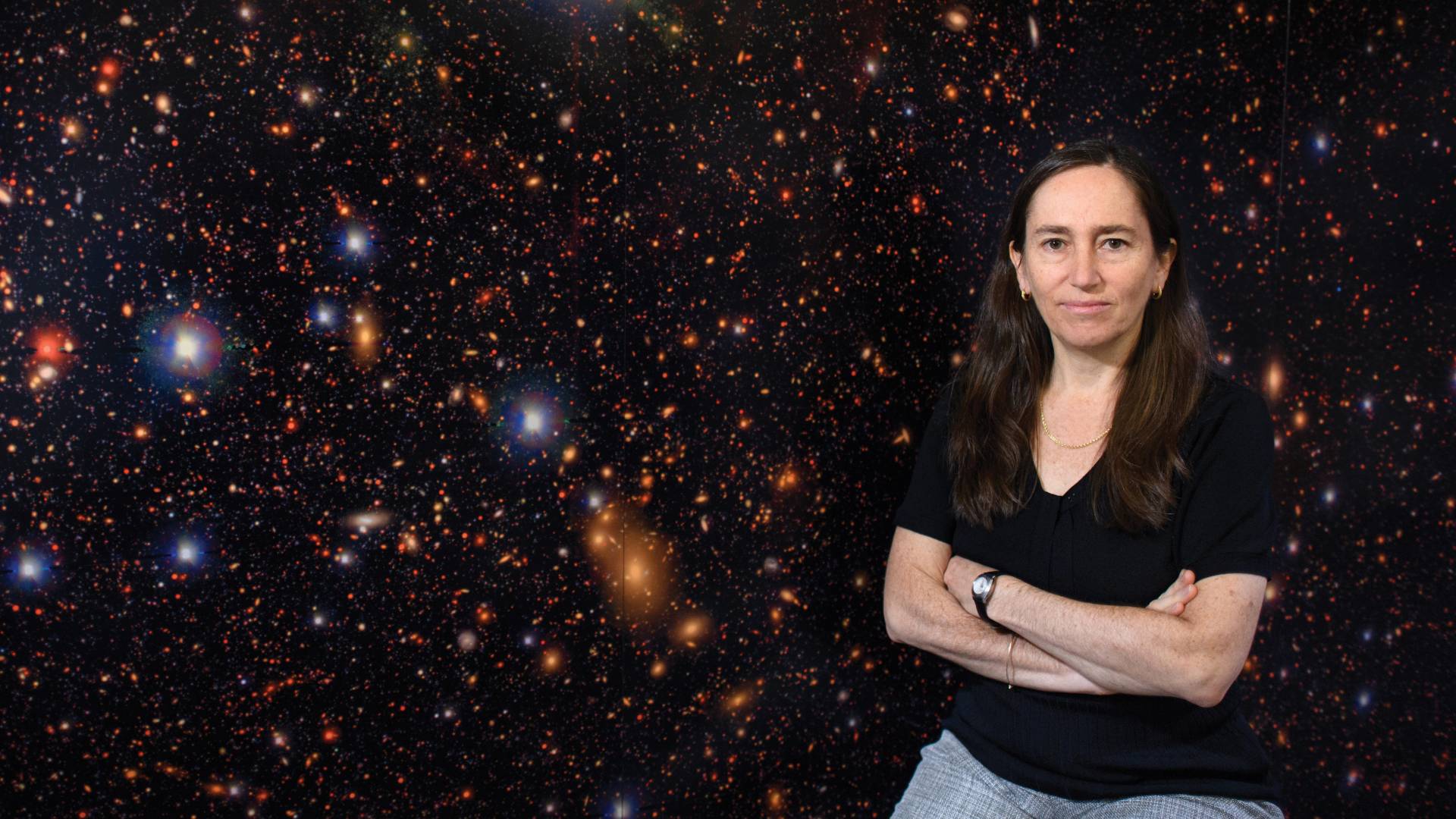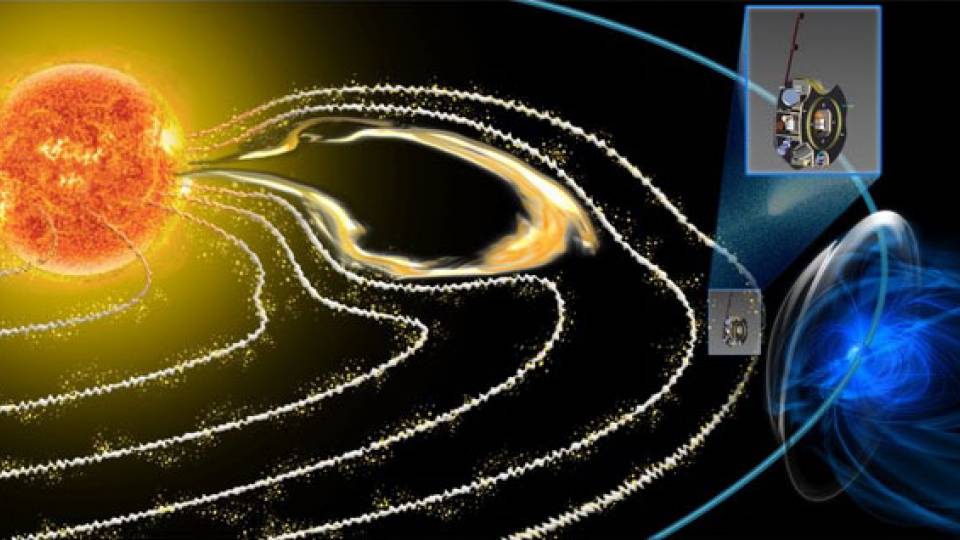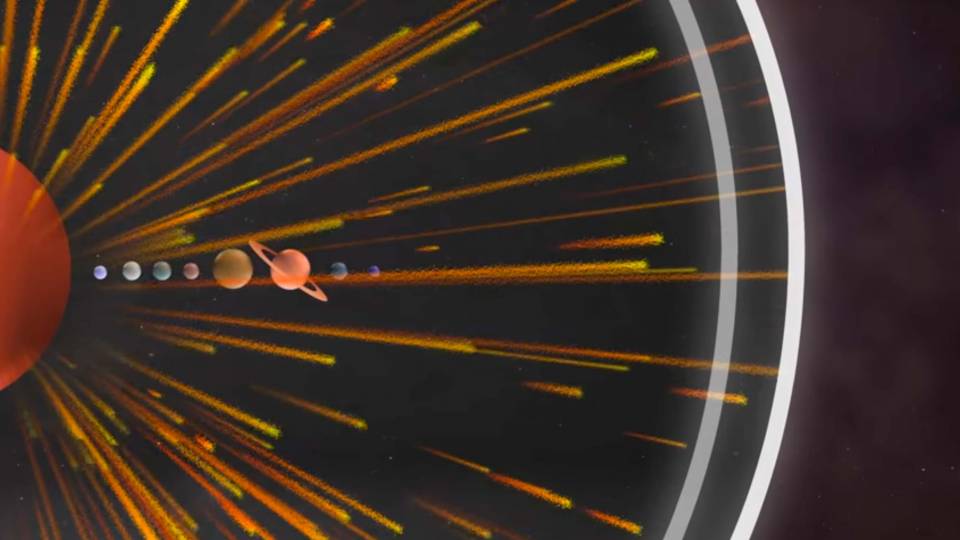Eve Ostriker
Outside Eve Ostriker’s office door stretches the universe, dotted with orange galaxies against the black backdrop of space.
The mural lines the hallway in Princeton’s astrophysical sciences building, where it inspires Ostriker to explore what lies beyond our own galaxy, the Milky Way. How did those far-flung galaxies grow and evolve?
“It is the story of ‘How did we get here?’ but it is not just us, it is all of the galaxies,” Ostriker said. “I’m motivated by wanting to understand how the universe works. And the fact that we now have the tools to do this just makes it all the more exciting.”
The tools she uses are powerful supercomputers and algorithms capable of simulating the birth, life, death and reincarnation of stars in their galactic homes. Ostriker, a professor of astrophysical sciences, and her collaborators and students build computer models using fundamental physical laws — ones that govern gravity, fluid dynamics and electromagnetic radiation — to follow the evolution of conditions found in deep space.
Interstellar ecosystem

Interstellar clouds form star clusters that ionize and disperse gas.
Beyond the edges of our solar system lies the interstellar medium, the space between stars. This is the “engine of cosmic evolution,” Ostriker said, where gases — mostly hydrogen and some helium — coalesce to form new stars, which grow, burn brighter and eventually die.
Fueling this engine are massive stars — those 10 times the mass of our sun. They pour out particles of ultraviolet light that ionize the gas around them and keep even distant parts of galaxies warm. When they die, these stars explode as supernovae that rapidly expel gas into the interstellar medium.
“Without massive stars to return energy to the system and keep the interstellar medium warm and stirred up, everything would be kind of dead,” Ostriker said.
A big puzzle is what causes the torrent of gas flowing out of galaxies, particularly at early stages of cosmic evolution. Telescope observations show outpourings of gas called galactic winds. Ostriker and her team are modeling how supernovae can spur formation of these winds, as well as galactic fountains of gas in the Milky Way.
Modeling the various parts of the picture — star formation, galactic winds and the rest of the interstellar ecosystem — requires bringing together a number of astrophysical concepts. The timescales over which things happen can be very long — billions of years — or very short, on the order of days.
After identifying the crucial physical details, researchers create a computer model in which a galactic region is divided into a grid consisting of hundreds of millions of cells. If the models, as they run forward in time, give results that look similar to actual astronomical observations, then the researchers are on the right track.
Bubbles and clouds
One area Ostriker explored with her team was the formation of superbubbles, giant fronts of hot gas that billow out from a cluster of supernova explosions. The spreading bubble drives heat and turbulent gas out into the interstellar medium, fueling the cosmic engine. The project included work by then-undergraduate Roberta Raileanu of the Class of 2016 and Chang-Goo Kim, an associate research scholar jointly appointed at Princeton and the Simons Foundation’s Flatiron Institute.

More recently, Ostriker and her colleagues turned their focus toward interstellar clouds. Jeong-Gyu Kim, a Lyman Spitzer, Jr. postdoctoral fellow at Princeton, developed a way to track how light moves through, and ultimately disperses, the clouds of gas surrounding nascent star clusters. Alwin Mao, a graduate student, explores how dust and gases collapse to form stars. Munan Gong, who earned her Ph.D. at Princeton in 2017, studies molecules and dust in the clouds.
The research team uses computing resources through the Princeton Institute for Computational Science and Engineering and its TIGER and Perseus research computing clusters, as well as supercomputers administered through NASA. “It is fantastic that the University offers high-performance computing resources,” Ostriker said. “It means that a student working on a new project can do cutting-edge research right away.”
This article was originally published in the University's annual research publication Discovery: Research at Princeton.






